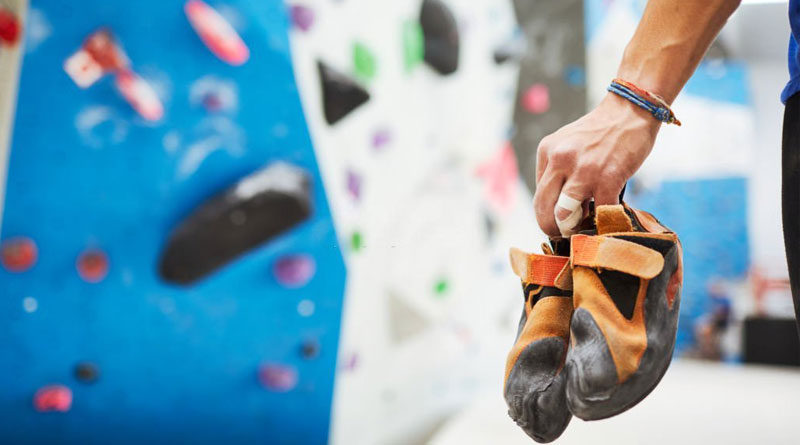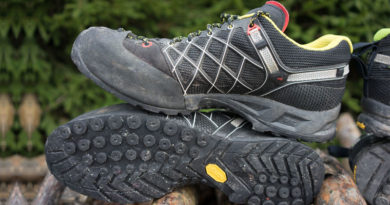Do Climbing Shoes Mold To Your Feet?
Yes, climbing shoes are designed to mold to your feet over time, as they are worn and used. This is because climbing shoes are typically made of materials that have some degree of stretch, such as leather or synthetic materials, and they are designed to fit snugly to provide maximum sensitivity and precision when climbing.
As you wear your climbing shoes, the materials will stretch and conform to the shape of your feet, creating a more customized and comfortable fit. This process can take some time, especially if you are using a new pair of shoes. But it is an important part of breaking in your climbing shoes and ensuring they perform well for you over time.
It’s important to note, however, that not all climbing shoes will mold to your feet in the same way. The degree to which they do so will depend on factors such as the materials used, the design of the shoes, and your own unique foot shape and size. Additionally, some climbing shoes may require more break-in time than others. So it’s important to be patient and allow your shoes to gradually conform to your feet for the best possible fit and performance.
How Climbing Shoes are Made
Climbing shoes are typically made of durable, flexible, and lightweight materials. Leather, synthetic fabrics, and rubber are the most common materials used in climbing shoe construction. Climbing shoes are typically made of high-quality leather that is designed to stretch and conform to the shape of the wearer’s foot over time. Climbing shoes are also commonly made from synthetic fabrics such as nylon and polyester. These materials are lightweight and durable, with a high level of breathability.
The design of climbing shoes is one of the key features that allows them to mold to your feet. Climbing shoes are typically made to fit snugly and securely, with a close-to-the-foot profile that allows for maximum sensitivity and precision when climbing. Their uppers are frequently made of a combination of materials, such as leather and synthetic fabrics, to provide a balance of durability and flexibility.
Climbing shoes’ soles are also important in their ability to mold to your feet. The soles of climbing shoes are typically made of a specialized rubber that is designed to be sticky and provide excellent traction on a variety of surfaces. Climbing shoe soles are frequently designed to be soft and pliable, allowing them to mold to the shape of the wearer’s foot over time. This can help to improve the shoe’s fit and comfort, as well as its overall performance.
How Climbing Shoes Mold to Your Feet
Climbing shoes are designed to mold to your feet over time as you wear them and use them for climbing. The materials used in climbing shoes, such as leather and synthetic fabrics, are designed to stretch and conform to the shape of your feet, creating a more customized and comfortable fit.
The process of climbing shoes molding to your feet can take some time and patience. When you first purchase a new pair of climbing shoes, they may feel tight and uncomfortable. However, as you wear them and use them for climbing, the materials will gradually stretch and conform to the shape of your feet, creating a more natural and comfortable fit.
The degree to which they will depend on several factors, including the materials used, the design of the shoe, and your own unique foot shape and size. Leather climbing shoes, for example, tend to mold more easily to the shape of your feet than synthetic shoes, as leather is a more flexible and stretchy material. Shoes with a more aggressive or down-turned shape may take longer to mold to your feet, as they are designed to provide a high level of performance and sensitivity.
It’s important to note that while climbing shoes are designed to mold your feet, they will not completely change the shape of your foot. If you have a foot shape that is drastically different from the shape of the climbing shoe, it may be difficult to achieve a comfortable and customized fit. In such cases, it’s important to consult with a professional shoe fitter or consider custom-made climbing shoes.
The Importance of a Good Fit
When it comes to climbing shoes, having a good fit is critical for both safety and performance. Climbing shoes that are too big or too small can cause discomfort and make it difficult to climb effectively. A good fit means that your climbing shoes are snug and secure on your feet without causing pain or discomfort.
A good fit can help you climb better by providing more support, stability, and precision. When your shoes fit properly, you will feel more connected to the rock or climbing surface, which will allow you to make more precise movements and achieve a better grip. Tight-fitting shoes can also keep your feet from slipping inside, lowering your risk of injury.
A good fit can improve your overall comfort while climbing, in addition to performance benefits. Shoes that are too big can allow your feet to move around inside the shoe, causing blisters, hot spots, and other discomforts. Shoes that are too tight can cause pain and discomfort and, in the long run, can lead to more serious foot injuries.
To ensure a good fit, try on several different pairs of climbing shoes until you find the one that best fits your foot shape and size. It’s also critical to consider any distinctive features of your feet, such as high arches or wide toes, and select a shoe that accommodates those features.
Breaking In Your Climbing Shoes
Breaking in your climbing shoes is an important step in achieving a customized and comfortable fit. When you break them in properly, it helps speed up the molding process and improve overall comfort.
The process of breaking in typically involves wearing them for short periods of time and gradually increasing the amount of time spent in them. This allows the shoes to gradually stretch and conform to the shape of your feet without causing undue discomfort or pain.
Another method for breaking in your climbing shoes is to use them for shorter climbing sessions, gradually increasing the duration of your climbs as the shoes mold to your feet. When breaking in your shoes, it’s important to listen to your body and not push yourself too hard, as this can cause pain and discomfort.
Some climbers also recommend using shoe stretchers or wearing socks with your climbing shoes to expedite the break-in process. It is important to note, however, that these methods may not work for everyone and may not be appropriate for all types of climbing shoes.
Conclusion
In conclusion, climbing shoes are designed to mold your feet over time, creating a customized and comfortable fit that can improve your climbing performance and reduce the risk of discomfort or injury. The materials used in climbing shoes, such as leather and synthetic fabrics, are designed to stretch and conform to the shape of your feet, but the degree to which they mold will depend on several factors, including the materials used, the design of the shoe, and your own unique foot shape and size.




